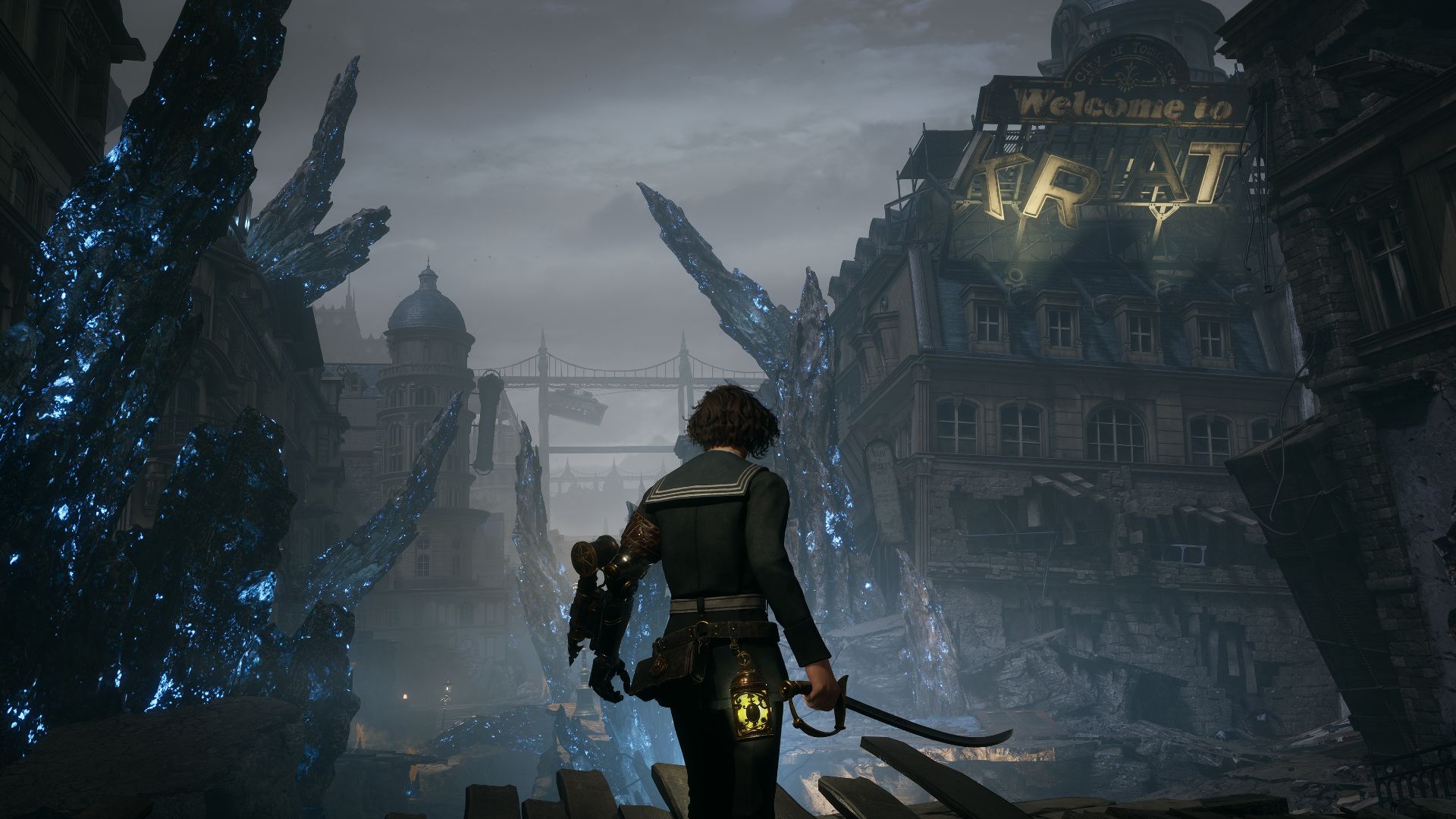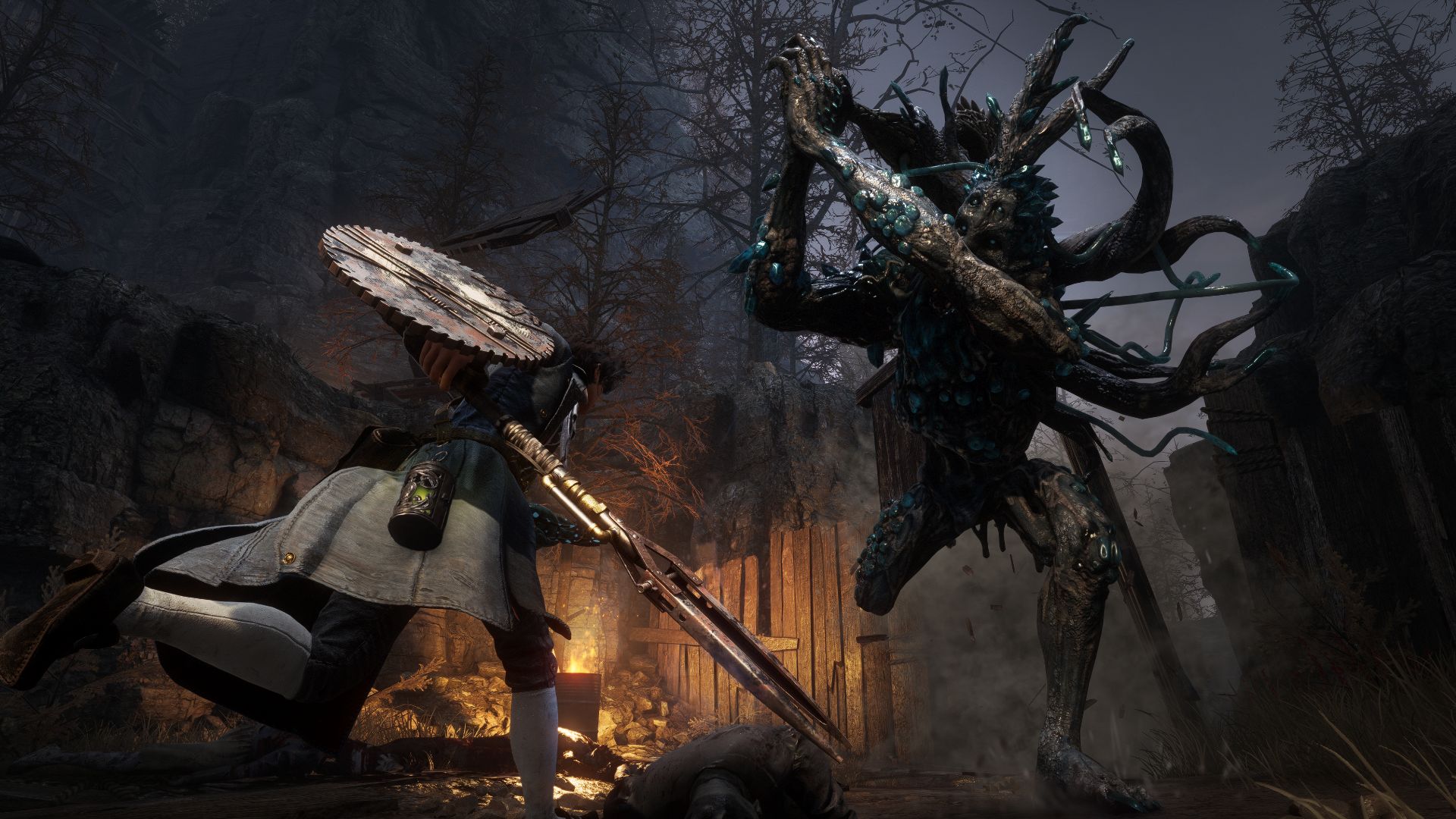FromSoftware effectively defined a generation of game design after Dark Souls diversified it with Bloodborne and Sekiro, and elevated it with Elden Ring. Since then many soulslikes have come and gone trying to replicate FromSoftware’s magic. Lies of P is next up, and while it oozes Bloodborne, my hands-on preview with the game has certainly proven that it has some ideas all of its own.
While Lies of P is clearly using FromSoftware’s game design and structure as its baseline, like any good puppeteer, developer Neowiz and Round 8’s has complete control of the strings and is creating what could be the best soulslike of the year. It decides how and when to pull on one of those core FromSoft principles and twist them expertly into the Pinnocio IP and the gothic, steampunk world of Krat.
The biggest way this was showcased during my time playing a five-hour demo was in how the choice-based narrative with multiple endings slots into the Pinnochio story the developers are expertly telling. The way the story is told in Bloodborne, Elden Ring, and other FromSoft titles is through subtle decisions or obscure repetitive actions. This often involves morally grey or vague actions and consequences for the world and yourself.
For example, in Bloodborne, you can choose to end your time as a hunter emerging from the dream in the waking world of Yharnham, continue on within the Hunter’s Dream but bound to the Moon Presence and the Hunt forever, or kill the Moon Presence overseeing the Dream and become a Great One yourself.
All of this is done by making choices at the end of the game or collecting sections of an umbilical cord scattered throughout the world. This obscure way of leading you towards an ending is being replicated here, but the decisions you are making are whether or not you, Pinocchio, decide to lie and masquerade as a human or tell the truth.
As I reached Krat Hotel, one of the main hub areas in the demo, I approached a door and tried to enter, before being told puppets aren’t allowed inside. I then had a choice, to lie and claim I was a human or say I was a puppet.
I chose to lie and upon doing so I was granted entry, but Pinnochio froze up and some text appeared on the screen telling me my cogs were being disrupted in some way. After a few seconds, I was able to move Pinnochio again, but at that moment I realized how great this risk-reward system would be in a game like this.
This choice-based system is a perfect fit as it allows Neowiz and Round 8 to draw upon what makes Pinnochio’s tale interesting and develop it through gameplay. It gives you the chance to play out the fantasy of a deceiver or try and battle through the mechanized malfunctions of manufacturing on the streets.
But, this potentially comes at the risk of not gaining access to some of the opportunities, quests, and areas that humans do in the city.
While I don’t know if sticking to your guns and playing by the puppet rulebook will make the game harder for you, as I wasn’t able to see the full scale of this system, I would be surprised if there weren’t larger gameplay consequences. I was able to foresee how it would work too, with Pinnochio possibly breaking down or suffering malfunctions over the course of the game if he lies too much.

This choice immediately got me excited as it sets up the stage for a great narrative that I am already invested in. It’s also a really unique twist that has the potential to work based on its premise alone – something that is often the stumbling block that causes many other soulslikes to fail.
Another great addition to FromSoftware’s gameplay foundation is the ability to break weapons. Everything in Krat is mechanical, made up of parts, sputtering, and barely even functional in some cases. So, the robotic enemies and their weapons all have a hand-crafted and rickety look to them.
Because of this, you can land a perfect parry and snap an enemy’s sword, stick, pipe, or whatever they are using in half, giving you an advantage and allowing you to work your way through Krat relying on a different mechanic, beyond just the traditional slashing and dodging.
Breaking weapons surprised me when it was introduced because I was shocked no one had done it before (from what I can recall) and how its simple addition made parrying exciting in a whole new way. Visceral attacks in soulslike games were always satisfying, especially in Bloodborne, but here their equivalent is just as gratifying as you land that perfect hit. An enemy glows red to signal you did indeed land the perfect parry and you hear the satisfying clang of their rusty crowbar break in half, nullifying a lot of their damage potential.
While this isn’t super useful on low-health mobs, with stronger enemies it is incredibly beneficial to spend time parrying, taking out one of their main forms of attack. Land enough perfect parries and you can make an enemy Groggy. This gives you a small window to attack once again with a charged attack, landing a strong blow as your foe’s cogs start to break down and weaken in a fight. This is super useful for bosses, especially as their weapons can’t be broken.
Other small aspects like special attacks for each weapon, varied weapon customization that provides different visual changes with parts and upgrades (in addition to unique moves), and a weapon durability system that is strict, but not too punishing (allowing you to repair your arsenal in the moment) really deepen the experience.
I was incredibly impressed with this Lies of P demo. There is a lot here that is building upon what makes FromSoftware games great, but not trying to emulate its style, storytelling, or gameplay in a cheap or uninteresting way. It feels like FromSoftware could have made this game, because of its quality when it comes to combat and worldbuilding, but does enough to feel fresh. Lies of P has plenty of its own unique ideas and a captivating, fascinating world that I can’t wait to continue exploring when the Lies of P release date arrives in September.





